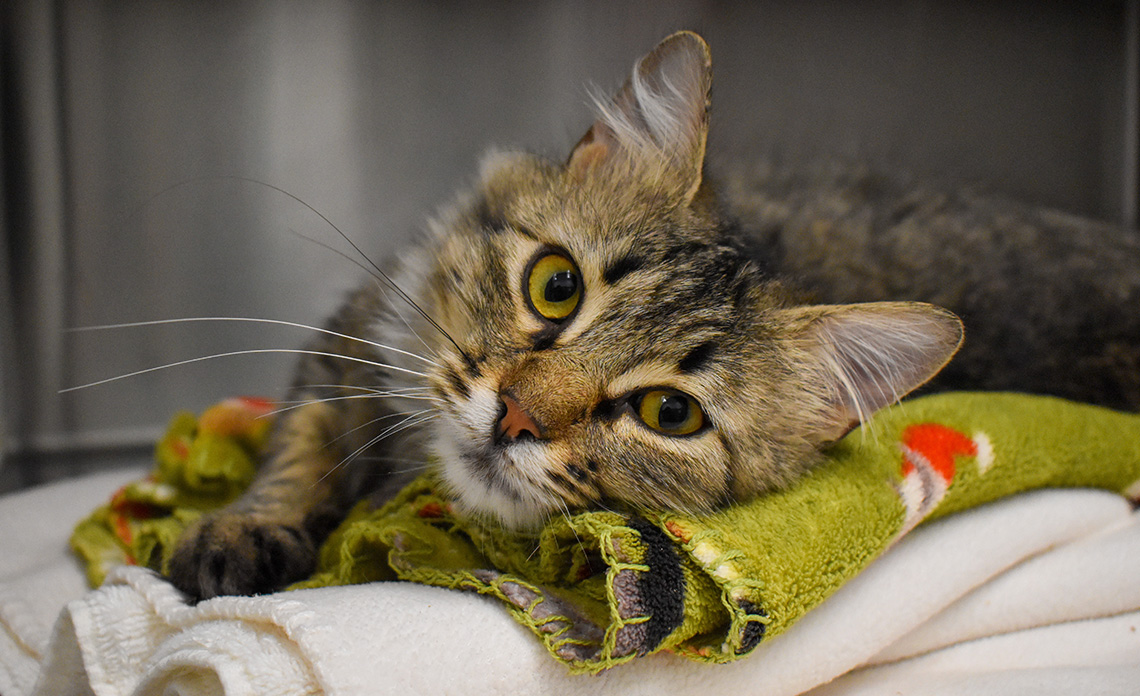Preventing destructive scratching
Summer is coming to an end, which for a lot of families may mean leaving your furry friends at home while you head back to work or school. Leaving your pet at home, whether for the first time or not, can be a difficult thing to manage.
Scratching behavior in cats
Keeping your cat at home can open an opportunity for them to scratch.
Cats have a natural need to scratch but using furniture to sharpen their claws can cause costly damage. It’s important to teach your cat where appropriate spots to scratch are to prevent destruction.
Cats scratch to shed the outer layer of their nails and stretch their muscles. Scratching allows cats to extend each of the joints in their toes, stretching their legs and back. They may also scratch to mark their scent, which helps them feel more at home.
Minimizing damage from cat scratching
You can help keep your cat’s nails in good condition by trimming them every 1-2 weeks, which will help minimize the damage they can cause by scratching. It is important to introduce nail trims to your cat early, to make to process easier for both of you. Using treats and catnip to keep your cat busy can help. If you have trouble trimming your cat’s nails, discuss tips and tricks with your groomer or veterinarian.
Redirecting your cat to scratch in appropriate places can prevent destruction to your furniture. Placing a scratching post near a piece of furniture your cat has been scratching can serve as a great alternative. Some cats prefer to scratch horizontally, vertically or even both. It is important to get a scratching post that allows them to scratch how they like.
You can help teach your cat to scratch on a post by using Feliscratch, a product that mimics the pheromones cats naturally leave behind once they have scratched something. The product has been proven to increase the likelihood that your cat will scratch in the area it is placed.
Rubber nail covers, like Kitty Caps or Soft Claws, can be applied to your cat’s nails with glue. These products, typically available online and at in-store retailers, allow your cat to stretch their muscles without causing any damage. Your veterinarian or groomer can help show you how to apply them.
Working with your cat on scratching
Trainers and behavioral specialists can also help work through destructive scratching habits if your cat is still having trouble.
Operation Kindness strongly advises against declawing. Declawing surgery, which involves amputating the last digit of the cat’s toes or severing the tendons attached to the cat’s claws, can cause physical and behavioral complications.
Declawing your cat can causing them to bite more, become litter box adverse and develop painful, abnormal bone growth, among other ramifications. You can read more here.
For behavior and training advice, please contact our behavior team by email or visit the resources section of our website.
Stay up to date
Follow us on Facebook, Instagram and Twitter for the latest news.





